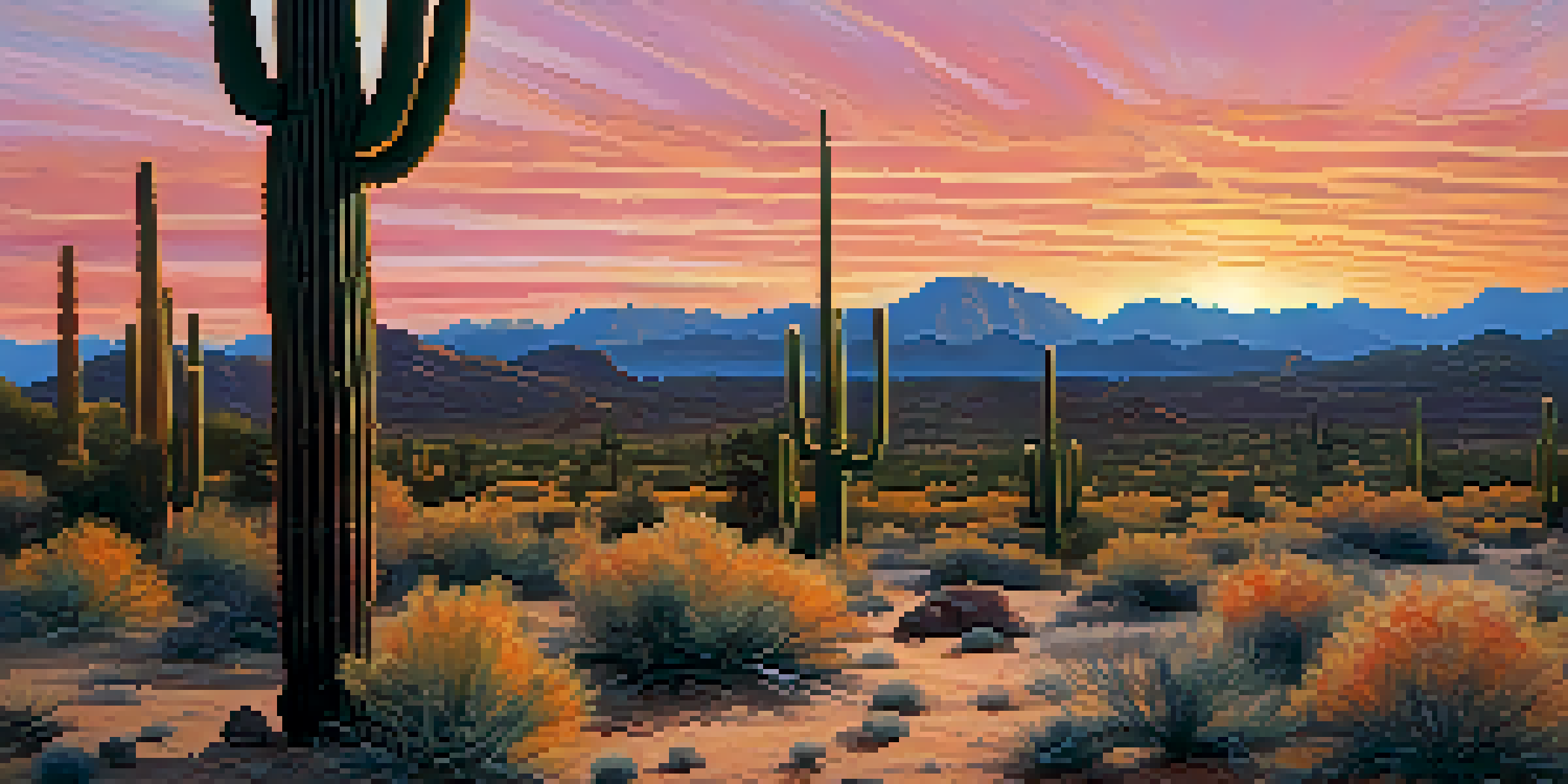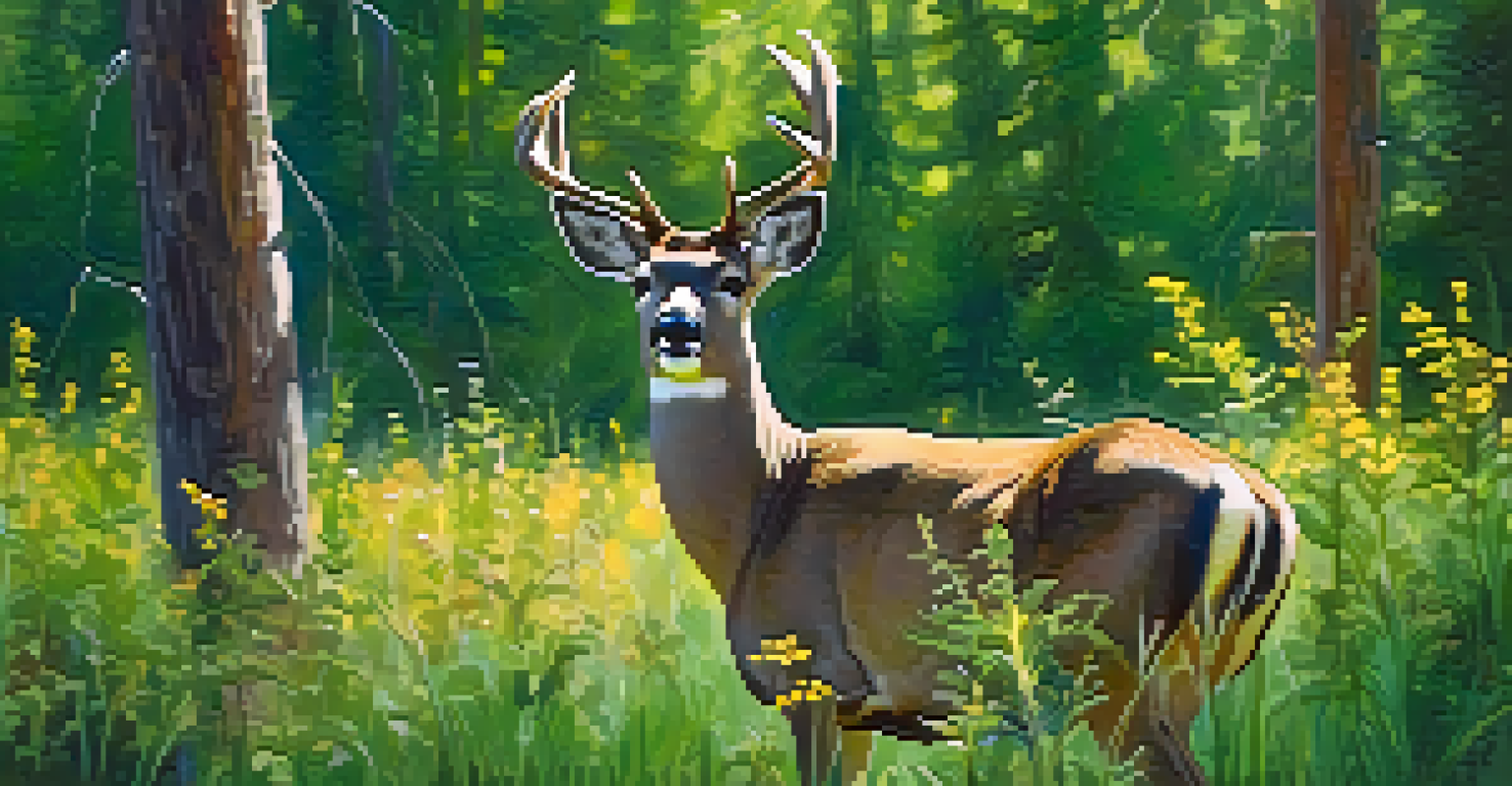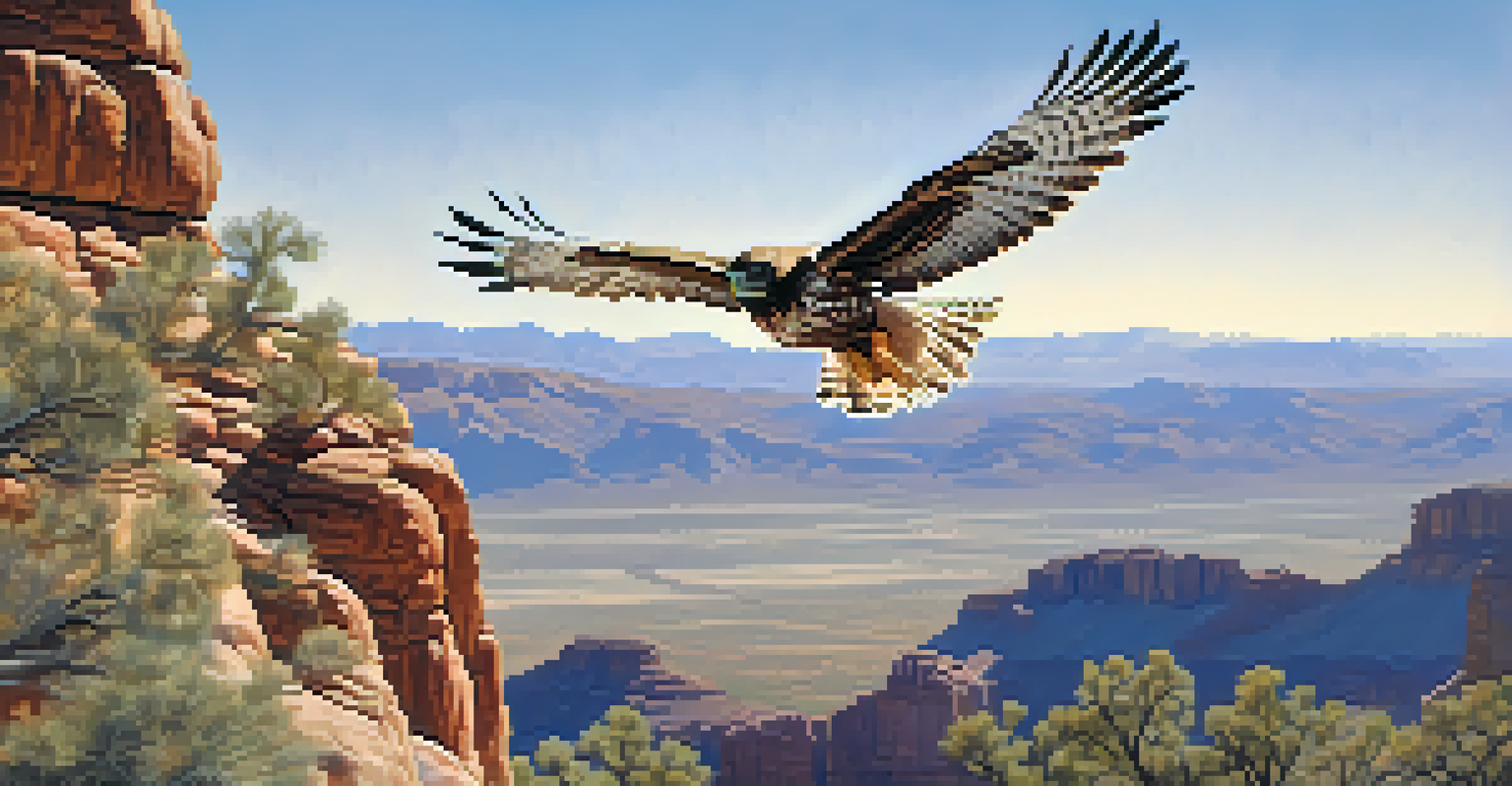Photography Tips for Capturing Arizona's Wildlife

Understanding Arizona's Unique Wildlife Habitats
Arizona is home to diverse wildlife, from the deserts to the forests. Each habitat supports different species, making it essential to know where to look for them. For instance, the Sonoran Desert is known for its vibrant cacti and unique creatures like the Gila monster.
In every walk with nature one receives far more than he seeks.
Familiarizing yourself with these habitats can enhance your chances of capturing stunning wildlife photos. Whether you're at the Grand Canyon or in a secluded canyon, knowing the terrain will help you plan your shoots effectively. Remember, different times of day can also affect wildlife activity, so timing is key.
Use resources like local wildlife guides or online forums to learn about specific areas where certain animals are frequently spotted. This way, you can target your photography trips to maximize your encounters and improve your photography experience.
Best Times for Wildlife Photography in Arizona
Timing is everything when it comes to wildlife photography. In Arizona, dawn and dusk are often the best times to capture animals in their natural behavior, as many are more active during these cooler hours. The soft, golden light during these times also adds a beautiful glow to your images.

Midday, on the other hand, can be challenging due to harsh lighting and heat, causing animals to seek shade. However, some species may still be active, so don’t rule out this time completely. Be prepared with the right gear to adapt to changing light conditions.
Know Arizona's Wildlife Habitats
Familiarizing yourself with Arizona's diverse habitats enhances your wildlife photography experience.
Always check local weather forecasts and animal activity reports before heading out. Knowing when specific species are more likely to be visible can greatly enhance your photography experience and lead to more successful captures.
Essential Gear for Wildlife Photography in Arizona
When photographing wildlife, having the right gear can make all the difference. A camera with a fast shutter speed is crucial for capturing quick movements of animals. Additionally, a telephoto lens will allow you to photograph animals from a safe distance without disturbing them.
Photography is the story I fail to put into words.
Consider bringing a tripod or a monopod to stabilize your shots, especially in low-light conditions. A sturdy bag to protect your gear from dust and sand is also a must in Arizona's rugged environments. And don't forget spare batteries and memory cards, as you wouldn't want to miss a perfect moment.
Lastly, a good pair of binoculars can help you spot wildlife before it comes into view of your lens. This will give you a better chance to compose your shot and capture that perfect image.
Mastering Composition Techniques for Wildlife Photos
Composition is key to creating compelling wildlife photographs. The rule of thirds is a great starting point; imagine dividing your frame into a grid and placing your subject along those lines for a more dynamic image. This approach can lead to more engaging and balanced photographs.
Incorporating elements of the environment can add depth to your shots. For example, framing an animal with surrounding foliage or a scenic backdrop can tell a story about its habitat. Experimenting with different angles and perspectives can also yield unique results.
Timing is Crucial for Photography
Capturing wildlife is best during dawn and dusk when animals are most active and the light is ideal.
Don’t be afraid to get low to the ground or shoot from a higher vantage point. Changing your perspective can highlight the subject's features in interesting ways, transforming an ordinary shot into something extraordinary.
Patience: The Key to Successful Wildlife Photography
One of the most important virtues in wildlife photography is patience. Animals often don't follow a script; sometimes, you may wait for hours without any action. However, this time spent observing can lead to amazing opportunities if you stay focused and quiet.
Use this waiting time to study your surroundings and anticipate animal behavior. Look for signs of wildlife such as tracks, sounds, or movements that can alert you to potential photo opportunities. Being aware of your environment enhances your chances of capturing a noteworthy moment.
Remember, every great wildlife photograph often comes with a story of perseverance. Embrace the process, and don’t rush; the results will be worth it.
Respecting Wildlife: Ethics in Photography
Ethics in wildlife photography is paramount. Always prioritize the well-being of the animals over getting the perfect shot. This means keeping a respectful distance and avoiding actions that could stress or disturb wildlife, especially during breeding or nesting seasons.
Understanding local regulations regarding wildlife interactions is essential. Some areas may have specific guidelines to help protect vulnerable species. When you respect these guidelines, you not only safeguard wildlife but also contribute to sustainable photography practices.
Respect Wildlife Ethics
Prioritizing the well-being of animals and understanding local regulations is essential for ethical wildlife photography.
Your respect for wildlife will reflect in your work, as authentic images often resonate more with viewers. Aim to tell a story that showcases the beauty of nature while promoting awareness and conservation.
Post-Processing Tips for Wildlife Photography
Post-processing is where you can enhance your wildlife images further. Simple adjustments to brightness, contrast, and saturation can bring out the colors and details that make your photos pop. Software like Adobe Lightroom or Photoshop offers plenty of tools to help you refine your images.
Be cautious, however, not to over-process your photos; keeping them natural is key to portraying the true essence of wildlife. Subtle enhancements are often more impactful than drastic changes.

Consider sharing your post-processed images on social media or photography platforms to connect with other wildlife enthusiasts. Feedback from the community can provide valuable insights and help you continue to grow as a photographer.